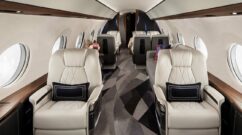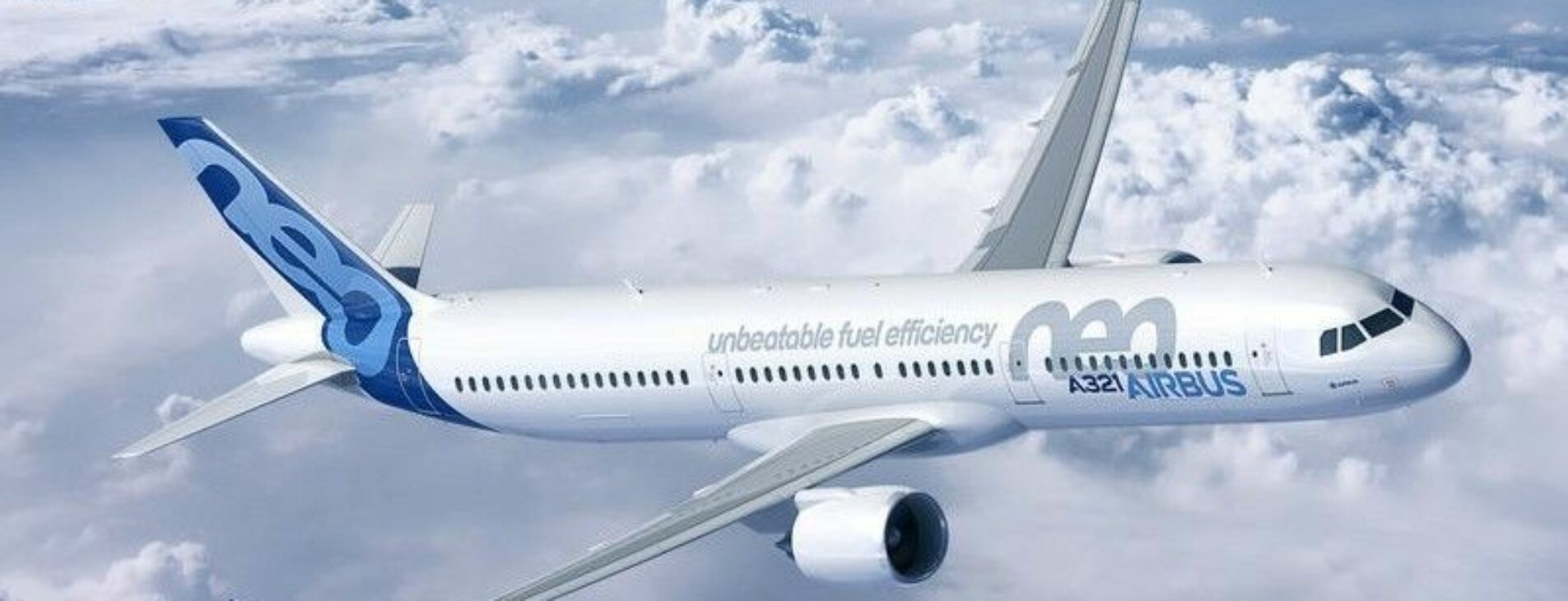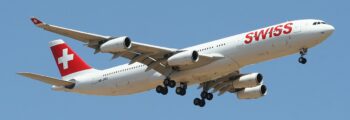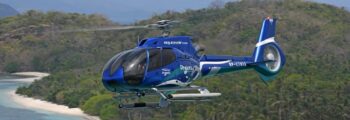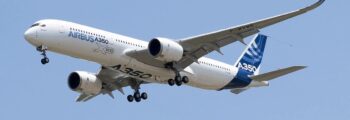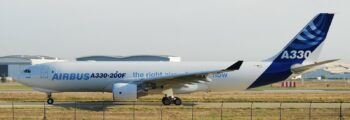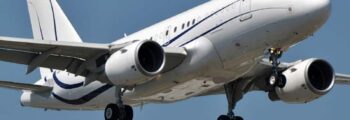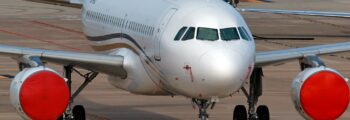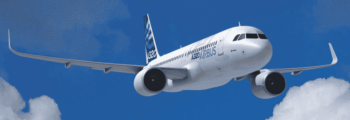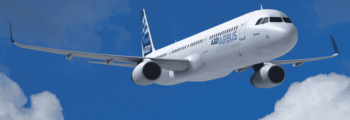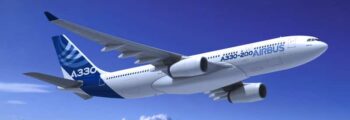Airbus is a European aerospace manufacturer. It was formed in the late 1960s after the grouping of several European aerospace manufacturers and entities. Its headquarters is located near Toulouse in France, in Blagnac exactly. This aircraft manufacturer, previously called Airbus Commercial Aircraft, specializes in the production of passenger aircraft for long-haul travel. It is among the largest aircraft manufacturers in the world. Indeed, nearly half of the airliners in the world belong to Airbus and are operated by numerous airlines. Airbus is in direct competition with the American aerospace manufacturer Boeing. We will together see the history, activities, actions of Airbus as well as its fleet of airplanes.
The origin of the Airbus aerospace manufacturer
After World War II, the aerospace industry began to develop. Turbofan engines were created, as well as many aircraft destined for the transportation of passengers or cargo specifically. Whether they are civilian, military, or commercial. The 1960s arrive with the growth of air transportation in all its forms. In 1965, at the Paris Air Show, European players in the aerospace industry discussed aircraft projects in order to differentiate themselves from American giants and their large aircraft. They needed to find a different market. This turned out to be the transport of many passengers over short and medium distances, like air buses, the “Air Bus.” The European aerospace players and manufacturers with all their respective missions questioned the idea of coming together. They then adopted the name Airbus, which thus became a European aircraft manufacturer.
The first projects of the Airbus aerospace manufacturer starting in 1965
1965: A first large-capacity aircraft project was born. Between France, England, and Germany, the resulting project was an aircraft with a capacity of around 225 seats.
1966-1967: This period marks the history of Airbus with the emergence of the Airbus A300 project. Airbus members developed a larger capacity aircraft, 300 seats, at a financial cost of 190 million pounds. These costs would be borne by the different member states of Airbus, with 37.5% for France and England, and 25% for Germany.
1968: The goal set by Airbus was to reach at least 75 orders in order to successfully carry out the A300 project. However, many airlines did not find a glaring interest in this aircraft. Airbus received no orders by June 1968. However, partnerships had already been signed with Lockheed and Rolls-Royce, who were to equip the A300 with engines. A solution therefore had to be found. It was then that the A300B was born. This is a reduced version of the A300. It will be a lighter aircraft with fewer seats than the 300 planned. However, England withdrew from this project. Germany and France each financed 50% of the project.
1969: The two countries allied during an agreement made at the Bourget Air Show. They then launched the A300B, a twin-engine aircraft with 226 seats. It will have the advantage of being more economical than other competing aircraft (specifically quad-jets or tri-jets). Several adjustments in the Airbus group and for this project in particular took place. It turns out that the Netherlands joined the project and participated financially to the tune of 6.6%.
1970: The aerospace groups Aerospatiale and Deutsche Airbus came together to officially form the Airbus Industrie group. This group is an Economic Interest Group (EIG) bringing together several nationalities. The headquarters is then located in Paris. The Airbus Industrie group is then chaired by Franz-Josef Strauss. Subsequently, other European aerospace entities joined the Airbus grouping. This is notably the case for the Spanish manufacturer CASA.
The activation of Airbus aircraft
1974: The first model of the A300B performed its first commercial flight. The original A300B project has been declined into numerous models (from A300B1 to B11) in order to best meet market demands. A version for air freight, a lighter version, an increased range, a reduced landing gear, or even an extended version, many aircraft were able to make their flight tests and prove themselves afterwards. That year, it was the first time that the A300 aircraft was used by an airline, Air France. The latter was one of the few airlines to opt for large-capacity aircraft. The aircraft made its first commercial flight in April between Paris and London.
1978: Airbus had been trying to establish itself in the United States for a few years without success. It was then that year that the manufacturer recorded its first real orders from the American company Eastern Air Lines (EAL), with an order for 23 B4 models of the A300. The various models of the A300 were a resounding success and entered serious competition with the American giant Boeing. This encouraged Airbus to produce new aircraft models more suited to the demands of airlines. Because the original A300 model owes part of its success to Air France, which needed large-capacity aircraft, but this is not the case for all airlines. The project for a new model was initiated, the A310, presented in 1978 in Hanover at an aerospace show.
1979: The A310 was appealing, and many airlines were already placing orders. Although the UK had withdrawn from the previous project, it participated in the development of the A310 to the tune of 20%. France and Germany each contributed 37.9%, and Spain 4.2%.
1982: Test flight for the A310.
1983: First deliveries of the aircraft for Swissair and Lufthansa, in particular. Several versions will be produced by Airbus (for example the A310-200, A310-300, or even the A310-600). These different versions will incorporate modifications to the wing, tail, as well as the aircraft’s capacity, and also a freight version, for example.
1984: Production of the A300B models stops.
The fleet of Airbus aircraft diversifies
In the early 1980s, Airbus saw an opportunity and a demand for the production of aircraft with around 150 seats, capable of covering medium-haul distances. In order to compete notably with the Boeing 737-200, the EIG planned a similar aircraft project. In 1981, the A320 project, a 150-seat aircraft, was initiated. To stand out from the competition, the manufacturer aimed for its future aircraft to be more fuel-efficient and equipped with technological advancements (notably the introduction of electric controls).
1984: marks the official launch of the A320. Orders are already arriving, 80 aircraft for 5 airlines.
1988: The first A320 airliner performs its first missions. In France, it was inaugurated in Toulouse the previous year. Air France then put it into service in 1988. The A320 achieved significant success and even dethroned its American competitor Boeing notably with a large order from Pan Am, an American airline.
The A320 is, in a way, a lever for the Airbus aerospace manufacturer, which is then considered one of the most important manufacturers worldwide. This model of aircraft holds the record of 400 orders placed before its entry into service, compared to only 15 for the A300.
1989: Riding the wave of success with its A320, Airbus decided to create the A321, a longer model, with a capacity of 186 passengers.
1990s: Airbus diversifies its range of aircraft and increases its production rate. It creates various versions of the A320 (A318, A319, or A321). It also produces new long-haul aircraft such as the A330 and A340 (while keeping in mind the need to differentiate from Boeing and its new model, particularly the Boeing 767).
1993 – 1994: respectively, these are the first commissioning of the first A340 and A330.
1995: A smaller version of the A320, the A319, performs its first flight. This aircraft is significant because its A319-114 version serves as a reference for the first business jets of Airbus Corporate Jets (ACJ) in 1999.
The Airbus aerospace manufacturer after the 2000s
At the end of the 90s, the Airbus group was restructured to remain a united and competitive structure against the American giant and especially limit costs. Mergers between several aerospace groups took place, and in 2001, Airbus was owned 80% by EADS (formed with Aérospatiale, CASA, and DASA) and 20% by BAE Systems. The headquarters of Airbus is located in Toulouse, France. Its CEO is Noël Forgeard.
2000: A massive project is launched; studies had already been initiated in the 1980s. It concerns a large aircraft, accommodating up to 800 people, which would be called the A3XX. This project is renamed Airbus A380 as we know it today, the largest passenger transport aircraft in the world. At this date, Airbus already records an order of 55 aircraft from 6 airlines.
2005: The A380 made its first test flight. During its creation, some aspects of the aircraft were difficult to implement, particularly regarding the final assembly of the various parts of the aircraft. Deliveries of the A380 were delayed. The first aircraft intended for airlines were expected to be available in 2007. Due to these successive delays, Airbus incurred a loss of 4.8 billion euros. Some airlines (such as Emirates, for example) requested financial compensation. To address the situation, Airbus decided to restructure its various production sites and standardize production systems.
2005: A brief overview of Airbus’s flagship aircraft indicates that at this time, the A320 alone accounts for 75% of the manufacturer’s orders.
2006: Airbus develops a new aircraft, the A350. It is presented this year in Farnborough. This wide-body aircraft will compete with the Boeing 777. It has a capacity of 350 passengers. Its first flight took place in 2013.
2007-2008: restructuring plans (notably Power8, Power8 plus) were implemented. Costs need to be reduced, leading to nearly 10,000 job cuts and strong protests. Some sites were also sold, and others relocated.
2011: Concerned about environmental issues, Airbus unveils its NEO project (New Engine Option). It will be applied to the A320neo, which then consumes 15% less fuel. This aircraft model becomes, with 1425 orders, the most sought after before its entry into service.
2010s: Airbus establishes its global presence in the aerospace market. It successively achieves record orders and production in those years.
Currently, and since 2018, the CEO of the group is Guillaume Faury.
The Airbus aerospace manufacturer after the health crisis
2020 – 2021: The aerospace group, impacted by the Covid-19 crisis, announced it lost 481 million euros in 2020. However, in 2021, orders began to rise again, recording a turnover of 363 million euros in the first quarter.
In 2021, Airbus also conducted an experiment by using 100% biofuels for one of its flights for the first time. This initiative is part of the goal of achieving carbon neutrality in aviation by 2050.
January 2022: The manufacturer Airbus signed 36 major orders for the start of the year. Likewise, it also made 30 aircraft deliveries during the same month to about twenty clients. Additionally, the aerospace manufacturer delivered its first ACJ TwoTwenty to the Swiss airline Comlux. It is an Airbus 220-100 specially arranged in a business version.
February 2022: With its aircraft deliveries, the manufacturer announces that its year 2021 was record-breaking. Indeed, the manufacturer made a historic profit of 4.2 billion euros, including 611 commercial aircraft delivered, an 8% increase compared to 2020.
Key figures of Airbus
The aerospace manufacturer can be characterized by a few important figures to date:
130,000 employees from over a hundred nationalities.
180: the number of Airbus sites around the globe.
12,000: the number of suppliers Airbus has.
The various actions of the Airbus aerospace manufacturer
Airbus is not only known for its commercial aircraft like the A320 or A380. It also undertakes numerous actions and realizations in other areas. Already on the production of commercial aircraft, of course, but also in the manufacture of helicopters (Airbus Helicopter), equipment destined for defense, space, and security. The company’s goal is to connect populations and provide innovative and secure solutions.
Finally, Airbus places great importance on manufacturing increasingly responsible, cleaner, less polluting aircraft, always at the forefront of the industry. It is committed to creating hybrid devices that are greener and more ecological, electric or even pilotless drones, for example. The future of mobility is a sector that Airbus constantly exploits and innovates.
The various Airbus projects for sustainable aviation
The topic of zero emissions is pioneering for the manufacturer. The manufacturer relies on four areas and develops various projects.
First, Airbus creates devices aimed at not emitting CO2 emissions. This is the case with their CityAirBus project, for example. An electric eVTOL that has already performed numerous flight tests.
Subsequently, the aerospace group plans hydrogen-powered devices. For Airbus, hydrogen is a very promising source that will reduce the aviation impact on the global climate. They aim to equip their commercial aircraft by 2035.
Then, the manufacturer also uses a natural energy source, namely the sun, to power its devices. Solar panels could capture solar energy and convert it into a propulsion system for its devices. Currently, there is a spacecraft, Zephyr, which is exclusively powered by sunlight.
Finally, Airbus also aims to reinvent urban air mobility. Aerial transport for the city of the future is already underway. Electric aerial vehicles are being manufactured to provide solutions for urban mobility. Airbus has also created a specialized division for this project, Airbus Urban Mobility.
The fleet of Airbus aerospace manufacturer
Airbus has manufactured numerous devices, aircraft and helicopters for both commercial missions and military, space or sustainable aircraft projects for the aviation of tomorrow.
To learn more, visit the pages of these main commercial aircraft that today make the reputation of the aviation giant: Airbus A319, Airbus A320, Airbus A321, Airbus A340, Airbus A330, Airbus A350, Airbus A318 ELITE, ACJ 220, or even the CityAirBus.
You now know a bit more about the aerospace giant. At AEROAFFAIRES, we are available 24/7, weekends and holidays included. We respond quickly to your online quote request as well as by phone at +33 1 44 09 91 82.



